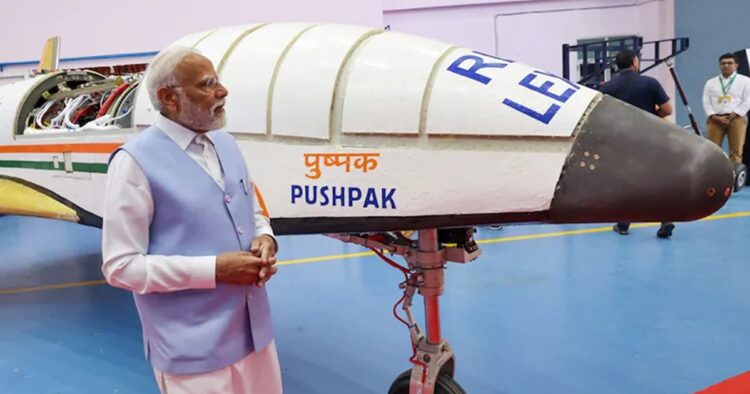After the successful completion of its first landing experiment, ISRO is gearing up for the second landing test of its Reusable Launch Vehicle (RLV), nicknamed ‘Pushpak.’ The Indian Space Research Organisation (ISRO) is set to conduct the second landing experiment, dubbed LEX-02, this week, as confirmed by ISRO Spaceflight on its social media handle.
ISRO’s mission to establish an Indian space station by 2035 is driving the development of essential technologies for a fully reusable launch vehicle, promising low-cost access to space. The upcoming landing experiment is a significant step forward in this ambitious endeavor.
In the forthcoming test, a Chinook helicopter will once again play a pivotal role. However, there’s a twist this time around. Unlike the previous experiment where the RLV-TD (Reusable Launch Vehicle-Technology Demonstrator) was aligned with the runway before being released from the Chinook, this test will see the Chinook taking a detour. The RLV will have to autonomously navigate and make turns to align itself with the runway, showcasing its advanced capabilities.
The announcement of the upcoming test was made via ISRO Spaceflight’s social media platform, indicating ISRO’s confidence in preparing for and executing the experiment successfully.
Last year, ISRO achieved a significant milestone with the successful completion of the Reusable Launch Vehicle Autonomous Landing Mission (RLV LEX). This test, conducted in April, marked a crucial step towards realizing ISRO’s vision of having its own ‘space shuttle’ or reusable space vehicle.
The RLV LEX, resembling the space shuttles once operated by NASA, is an autonomous winged spaceplane designed to return from space and land like a regular aircraft. This space aircraft features wings and utilizes a high glide angle approach, requiring landing at velocities as high as 350 kmph.
The second landing experiment, LEX-02, holds immense importance in ISRO’s pursuit of developing a fully reusable launch vehicle technology. The successful execution of this test will not only validate the capabilities of the ‘Pushpak’ RLV but also bring India one step closer to achieving its goals of affordable and accessible space exploration.

















Comments